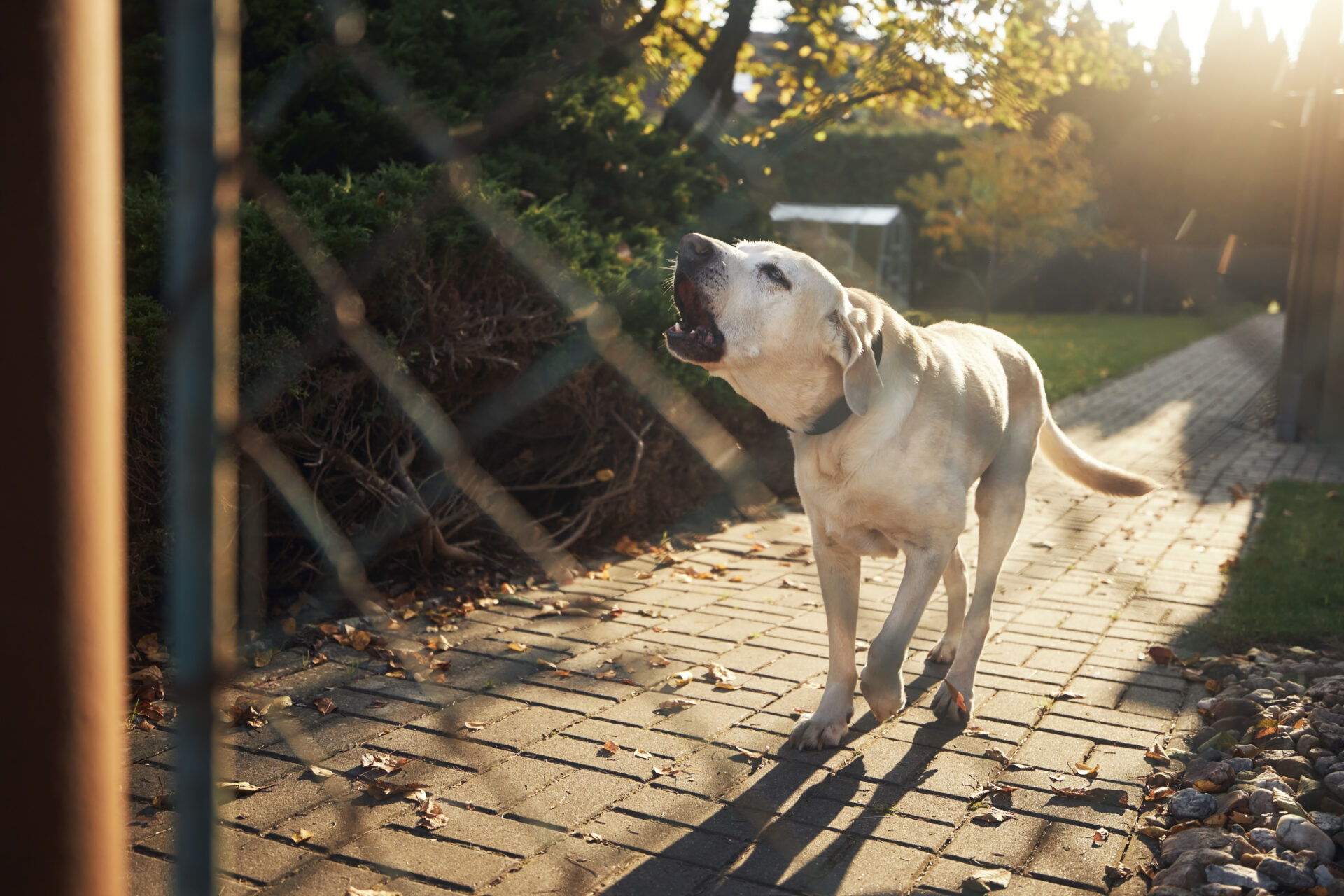Barking is a natural form of communication for dogs. It’s how they say, “Hey! Look over there!” or “I need something!” But when barking becomes excessive, it can turn from charming to downright frustrating—for you, your family, and possibly your neighbors. The good news? With a little patience and training, you can stop dogs barking excessively and teach your dog to bark less to bring harmony back to your home. Let’s dive into why dogs bark and how to train them to control it.
Some of the links on this page are affiliate links, which means we may earn a commission at no extra cost to you if you make a purchase. As an Amazon Associate I earn from qualifying purchases. We only recommend products we genuinely love and think you’ll find helpful!
Why Do Dogs Bark?
Dogs bark for a variety of reasons, and understanding the root cause is the first step in addressing excessive barking. Here are some of the most common reasons:
1. Alerting or Protecting
“Woof woof! There’s someone at the door!” Alert barking is a deeply ingrained instinct. Dogs are territorial and often bark to warn you of a perceived intruder.
2. Attention-Seeking
Sometimes, your pup just wants your attention. Barking is their way of saying, “Play with me!” or “I need a potty break.”
3. Boredom or Loneliness
If your dog is left alone for long periods, they might bark out of boredom or loneliness. They’re social creatures, and barking might be their way of expressing frustration.
4. Fear or Anxiety
When dogs feel threatened, stressed, or anxious, barking can be a coping mechanism. This is common during thunderstorms, fireworks, or when they encounter unfamiliar people or animals.
5. Excitement
Ever notice your dog barking like crazy when you grab their leash or throw a ball? Dogs can get overexcited and express it with loud, repetitive barks.
6. Medical Issues
Sometimes, barking could indicate pain or discomfort. If your dog’s barking is sudden and unusual, a visit to the vet might be in order.

How to Train Your Dog to Bark Less
Training a dog to bark less doesn’t mean silencing them completely—after all, barking is one of their primary ways to communicate. Instead, the goal is to teach them when barking is appropriate and when it’s not.
1. Understand the Trigger
Before you can train your dog to stop excessive barking, you need to identify what’s causing it. Is it the mailman? Passing cars? The neighbor’s cat? Observing their behavior will help you address the issue more effectively.
“To dogs, barking is normal, but you must teach them that not every sound or situation requires a response,”
– Cesar Millan.
2. Teach the “Quiet” Command
Teaching your dog to be quiet on command is one of the most effective ways to manage barking. Here’s how:
- Step 1: Wait for your dog to bark.
- Step 2: Say “Quiet” in a calm but firm voice.
- Step 3: The moment they stop barking, reward them with a treat and praise.
- Step 4: Repeat consistently until they associate “Quiet” with stopping barking.
3. Desensitize to Triggers
If your dog barks at specific triggers (e.g., the doorbell), desensitization can help. Here’s a quick guide:
- Start by exposing your dog to the trigger at a low intensity. For example, play a recording of a doorbell at a low volume.
- Reward your dog for staying calm.
- Gradually increase the intensity (e.g., volume or proximity to the trigger).
The goal is to teach your dog that the trigger isn’t a big deal.
4. Provide Plenty of Exercise and Enrichment
A tired dog is a quiet dog. Make sure your pup gets plenty of physical exercise and mental stimulation each day. Long walks, puzzle toys, and playtime can reduce boredom and excess energy that might lead to barking.
5. Avoid Reinforcing Barking
If your dog barks for attention, resist the urge to give in. Don’t yell at them or give them what they want; this only reinforces the behavior. Instead, wait for them to stop barking, then reward the quiet.
6. Use Positive Reinforcement
Dogs respond best to positive reinforcement. Always reward the behaviors you want to see more of—like staying quiet during a previously barking-inducing situation.
7. Consider Professional Help
If your dog’s barking is severe or tied to anxiety, consider consulting a professional trainer or veterinarian. They can offer tailored solutions to address your dog’s specific needs.

Common Mistakes to Avoid
When tackling excessive barking, it’s important to avoid these common mistakes:
1. Yelling at Your Dog
Yelling might feel cathartic, but to your dog, it sounds like barking. It could actually make them bark more.
2. Inconsistent Training
If you let your dog bark sometimes but not others, they’ll get confused. Consistency is key to effective training.
3. Neglecting the Root Cause
Addressing barking without understanding its root cause is like putting a band-aid on a bigger problem. Take the time to figure out why your dog is barking.
Patience is Key
Training a dog to stop excessive barking takes time and consistency. Don’t expect overnight results, and don’t give up if progress feels slow. Dogs thrive on routine, and with patience, they’ll learn when it’s okay to bark and when it’s not.
Remember, your dog isn’t barking to annoy you—they’re trying to communicate. By addressing their needs and teaching them alternative behaviors, you can create a more peaceful environment for both of you.
Conclusion
Excessive barking doesn’t have to be a permanent problem. By understanding why your dog barks and using consistent training techniques, you can help them find their “off switch.” Whether it’s a quick “Quiet” command or a long walk to tire them out, you’re taking steps toward a calmer, happier pup.
So, take a deep breath, grab some treats, and get started. Before you know it, you’ll have a quieter home—and a stronger bond with your furry friend.




